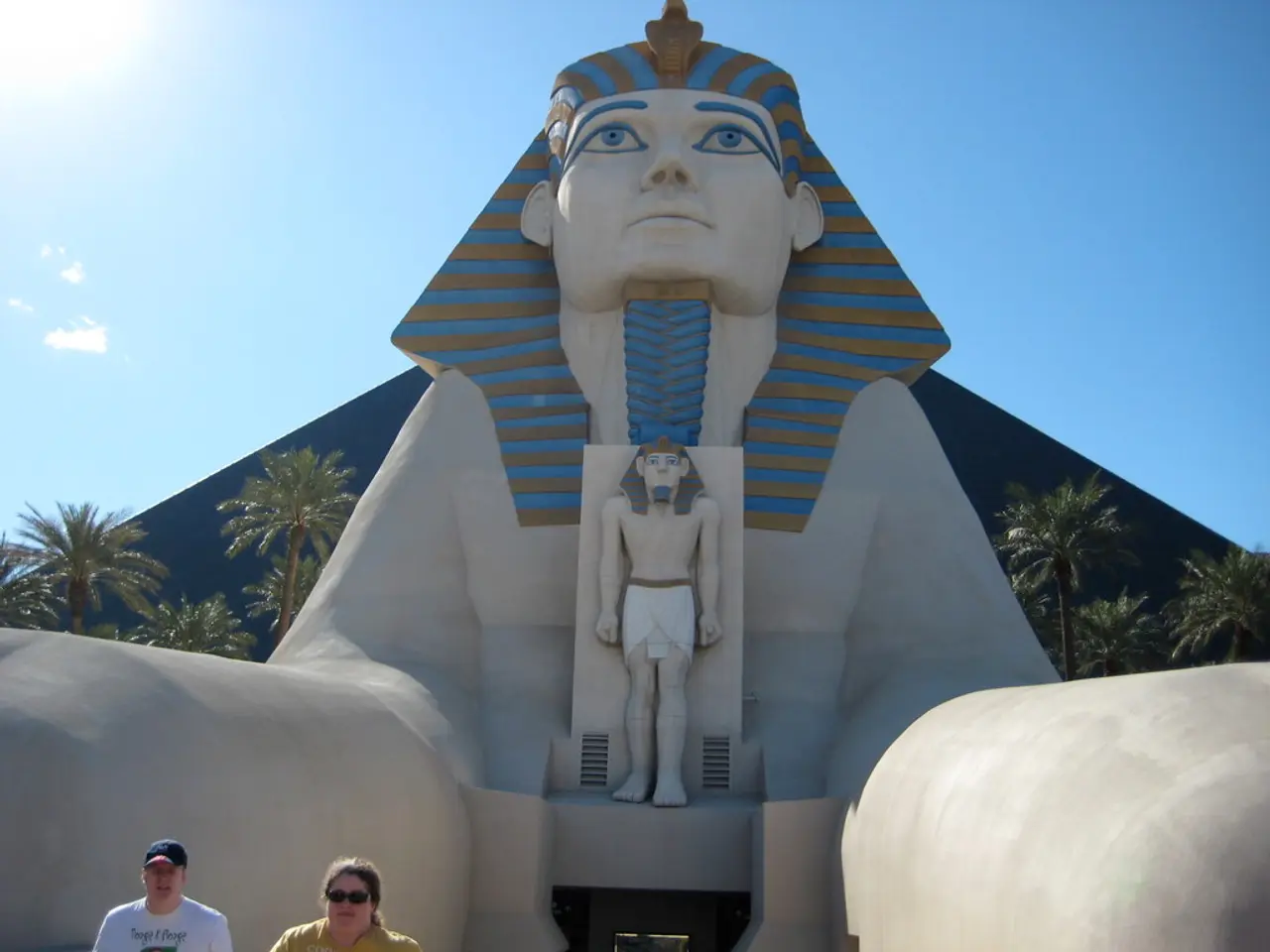Retrieving artifacts from a 2,000-year-old submerged city found in the sea close to Alexandria by Egyptian authorities
In the waters off Alexandria, Egypt, archaeologists have made a remarkable discovery that spans over 2,000 years of history. The submerged archaeological site, located in Abu Qir Bay, has yielded a wealth of artefacts, including statues, architectural fragments, and a dock that once served as a harbour for small boats during the Ptolemaic and Roman eras.
The newly documented remains include limestone structures interpreted as places of worship, residences, and commercial or industrial spaces. Among the most striking discoveries are statues of royal figures and sphinxes from the pre-Roman period, including a partially preserved sphinx engraved with the cartouche of Ramesses II.
These findings may be an extension of the ancient city of Canopus, a significant centre of learning and trade during the Ptolemaic period. Archaeologists also identified reservoirs and rock-carved ponds used for domestic water storage and fish cultivation. Many pieces are fragmentary, including a beheaded Ptolemaic figure in granite and the lower half of a Roman nobleman carved in marble.
The underwater excavation in Abu Qir Bay is Egypt's first under the 2001 UNESCO Convention on the Protection of Underwater Cultural Heritage. Divers helped locate the items, and cranes lifted them to the surface for restoration. Many of the recovered artefacts are being prepared for a special exhibition, "Secrets of the Sunken City," at the Alexandria National Museum.
In response to these discoveries and the vulnerability of Alexandria to flooding and storms, authorities have launched an Anticipatory Flood Management initiative with Dutch partners. The initiative combines early-warning systems, upgraded drainage, and new coastal protections to reduce flood and storm impacts.
Alexandria's subsidence, with the city subsiding by more than 3 millimetres a year, adds urgency to the work. Even in the United Nations' best-case climate scenario, a third of the metropolis could be underwater or uninhabitable by 2050. The finds connect millennia of settlement and trade with modern energy infrastructure, showing how the coastline has shifted through natural forces and human activity.
Local infrastructure is already under stress, with annual building collapses rising from about one a decade ago to around 40. This surge is linked to saltwater intrusion, ground subsidence, and erosion. The Antiquities Ministry described a cluster near a 125-metre dock as including a merchant ship, stone anchors, and what officials described as a harbour crane.
Tourism and Antiquities Minister Sherif Fathi emphasized the cautious approach during the operation, stating that only specific material according to strict criteria is being brought up. No verifiable information was found that identifies an organization or person involved in the rescue of the underwater ruins of Alexandria in Egypt in August 2025.








